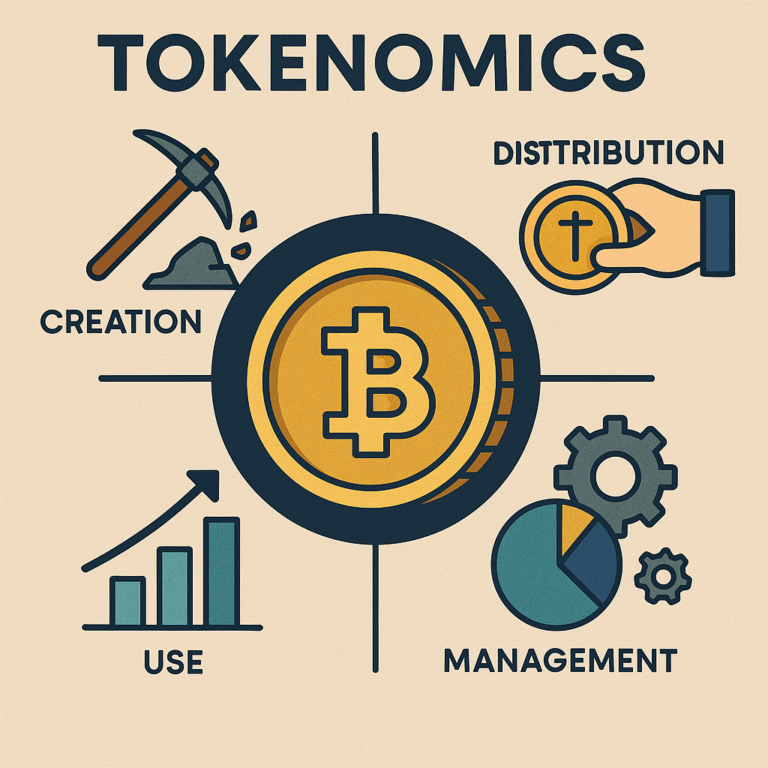Crypto Mining ROI Calculator: Stats That Matter in 2025
Why ROI Matters in Crypto Mining
In the world of crypto mining, profitability isn’t guaranteed. Whether you’re spending a few hundred dollars on a GPU or millions on industrial ASIC rigs, understanding your Return on Investment (ROI) is absolutely critical.
Crypto mining isn’t just about running machines—it’s about running the numbers.

Table of Contents
💰 Understanding Return on Investment in a High-Cost Industry
Crypto mining involves substantial upfront and ongoing costs:
- Hardware (ASICs, GPUs, rigs)
- Electricity bills
- Cooling and maintenance
- Mining pool fees or hosting services
In return, you earn coins like Bitcoin, Litecoin, or Kaspa—but their value can fluctuate wildly. That’s why ROI is your most important metric. It answers questions like:
- How long will it take to recover my initial investment?
- Is it more profitable to mine or to buy and hold coins?
- Am I mining in a cost-effective environment?
Without calculating ROI, miners risk operating at a loss, especially during market dips or when mining difficulty increases.
🧱 From Hobbyist to Industrial Scale: Everyone Needs to Calculate ROI
No matter your scale:
- A solo miner with one GPU needs to know if the electricity bill is worth the payout.
- A mid-sized mining farm must balance gear upgrades against changing coin prices.
- A corporate mining facility with thousands of ASICs needs real-time ROI tracking to stay ahead of competition.
With rising competition and evolving network dynamics, even a small miscalculation can wipe out profits. That’s why using an accurate ROI calculator—factoring in live stats like hash rate, coin difficulty, and energy prices—is essential for success in 2025.
How a Crypto Mining ROI Calculator Works
A Crypto Mining ROI Calculator is more than a profit estimator—it’s your decision-making tool. Whether you’re investing in new hardware or analyzing your current setup, a good calculator helps you predict earnings, expenses, and payback time based on real-time market conditions.
🔢 Key Inputs You’ll Need to Calculate ROI
A reliable ROI calculator typically asks for:
- Hash Rate
The speed at which your mining rig processes transactions. Higher = better earnings. - Power Consumption (Watts)
Total electricity usage of your mining hardware. - Electricity Cost (per kWh)
This varies by country or provider. Affects your net profit directly. - Hardware Cost
Initial investment for GPUs, ASICs, rigs, etc. - Coin Price
Real-time market value of the coin you’re mining (e.g., BTC, LTC, KAS). - Mining Difficulty & Block Reward
These network stats influence how much crypto you earn per hash.
📈 How ROI is Calculated
A typical ROI formula looks like:
mathematica
CopyEdit
ROI (%) = [(Total Revenue – Total Costs) / Total Costs] x 100
But for miners, calculators often give:
- Estimated Daily, Monthly, and Annual Earnings
- Power Costs and Net Profit
- Break-Even Point (Payback Period)
Some calculators even simulate different scenarios (bull vs. bear markets).
⚡ Real-Time vs. Long-Term Projections
- Real-Time Calculators use current prices, hash rates, and difficulty to project daily profits.
- Long-Term ROI Projections estimate how future network difficulty, halvings, or energy rate changes affect your returns.
To stay profitable, miners need to recalculate ROI often, especially when:
- Coin prices fluctuate
- Network difficulty spikes
- New, more efficient hardware is released
Essential Stats That Impact Crypto Mining ROI
Knowing how to calculate ROI is only useful if you understand what really affects it. These key stats can make or break your mining profitability in 2025.
💸 1. Hardware Costs
Your initial investment forms the foundation of ROI.
- ASICs vs. GPUs
ASICs (like Antminer S19) are powerful but expensive and limited to specific coins.
GPUs are more flexible but less efficient. - Lifespan & Depreciation
Most mining gear becomes outdated within 2–3 years.
This affects resale value and ROI over time.
⚡ 2. Electricity Costs
Energy is the biggest ongoing cost in crypto mining.
- Price per kWh
Varies drastically by country. Mining in a region with $0.03/kWh vs. $0.12/kWh can be the difference between profit and loss. - Power Consumption
Knowing your rig’s wattage helps estimate monthly bills accurately.
📈 3. Coin Market Value & Mining Difficulty
These two metrics are often overlooked, but they directly impact your earnings.
- Coin Price Volatility
A spike in price can double your earnings, while a crash can wipe out profit entirely. - Mining Difficulty
Adjusts based on the number of miners in the network.
Higher difficulty = fewer rewards = lower ROI.
⏱️ 4. Block Rewards & Halvings
The amount of crypto you earn per block matters—especially in proof-of-work systems.
- Bitcoin Halvings
Every 4 years, BTC block rewards are cut in half, reducing income unless price rises. - Other Coins
Each coin has its own reward schedule (e.g., Litecoin, Kaspa, Dogecoin). Study them before mining.
🧾 5. Pool Fees, Maintenance & Hosting
These are the hidden costs that creep into your ROI:
- Mining Pool Fees
Usually 1–2%. Consider solo mining if your hash rate is strong enough. - Maintenance & Cooling
Dust, heat, and downtime affect performance and hardware life. - Colocation/Hosting Costs
If you rent space for your rigs, add that to your operational expenses.
Geo-Factors That Influence Crypto Mining ROI
Where you mine is just as important as what you mine. Regional factors can dramatically impact profitability, especially when it comes to energy, policy, and infrastructure.
🌐 1. Electricity Prices by Region
- Countries like Paraguay, Kazakhstan, and Ethiopia offer ultra-low power costs under $0.03/kWh.
- Compare that to places like Germany or the UK, where electricity can exceed $0.30/kWh—often making mining unprofitable.
🏛️ 2. Regulation and Legal Status
- Some regions welcome miners with tax incentives and legal clarity (e.g., Texas, UAE).
- Others impose bans, restrictions, or extra taxes, like China or New York State.
✅ Pro Tip: Always research local mining laws before investing in hardware or hosting.
❄️ 3. Climate and Cooling Costs
- Mining generates heat. A cooler climate reduces cooling infrastructure costs.
- That’s why countries like Canada, Russia, and Iceland are favored by industrial farms.
🛜 4. Internet & Grid Infrastructure
- Mining requires stable electricity and reliable internet.
- Poor infrastructure leads to downtime, which eats into profits.
🔧 5. Political and Economic Stability
- Frequent power outages, unstable currencies, or policy swings introduce high risk.
- Always factor in geopolitical risks when projecting long-term ROI.
ROI Over Time: Daily, Monthly, and Annual Projections
Crypto mining isn’t a one-time bet—it’s an ongoing game of efficiency, strategy, and market timing. To make smart decisions, miners need to understand how ROI plays out over time.
📆 1. Daily ROI
- Measures how much profit (or loss) you make every 24 hours.
- Best for short-term tracking of performance based on current market prices.
- Useful during high-volatility periods or when testing new coins or rigs.
Example: If you earn $5/day net after power costs, and spent $1,000 on equipment, your break-even point would be ~200 days.
📅 2. Monthly ROI
- Accounts for monthly trends like price swings, network difficulty changes, and energy usage fluctuations.
- Allows better planning for electricity bills, maintenance, and operational strategy.
- Useful for comparing different coins or mining setups over time.
📈 3. Annual ROI & Payback Period
- Tracks total profitability over a 12-month span.
- Helps determine:
- Is this rig worth it long-term?
- How does this investment compare to simply buying and holding crypto?
- Payback Period: How many days/months it takes to recover your initial investment.
Shorter payback = better ROI potential.
📊 ROI Scenario Planning: Bull vs. Bear vs. Sideways
Smart miners prepare for all 3 market phases:
- Bull Market: Coin prices rise, ROI increases rapidly.
- Bear Market: Lower prices may lead to breakeven or even losses.
- Sideways Market: Stable earnings, but less upside—hardware efficiency matters most.
Tip: Use calculators that allow you to simulate multiple scenarios using projected hash rate, coin value, and energy prices.
Top Crypto Mining ROI Calculators in 2025
With so many variables affecting profitability, using a reliable ROI calculator is essential. These tools help miners—from beginners to professionals—estimate earnings, expenses, and payback periods with real-time accuracy.
🔝 1. WhatToMine
Best for: GPU miners, altcoin comparisons
- Estimates profitability across dozens of coins
- Includes GPU-specific hash rates and power use
- Real-time coin prices and difficulty
🌐 whattomine.com
🔝 2. NiceHash Profitability Calculator
Best for: Beginners using plug-and-play mining
- Simple, user-friendly interface
- Uses NiceHash’s real-time market stats
- Good for small-scale miners
🌐 nicehash.com/profitability-calculator
🔝 3. CryptoCompare Mining Calculator
Best for: ASIC miners and Bitcoin mining projections
- Advanced input options: hardware cost, power, fees, difficulty
- Great visual breakdowns and detailed outputs
🌐 cryptocompare.com
🔝 4. Minerstat
Best for: Professionals and industrial-scale farms
- Real-time monitoring + ROI tracking
- Multi-coin, multi-rig tracking
- Includes temperature, uptime, and revenue insights
🌐 minerstat.com
🔝 5. CoinWarz
Best for: Cross-coin mining ROI estimates
- Simple UI, supports GPU & ASIC
- Offers coin switching profitability
🌐 coinwarz.com
✅ Pro Tip:
Use multiple calculators to compare results.
Each platform may use different difficulty estimates, power assumptions, or reward rates—cross-check to make the most informed decisions.
Read Also: What Is Crypto Mining? A Simple Guide for New Investors






